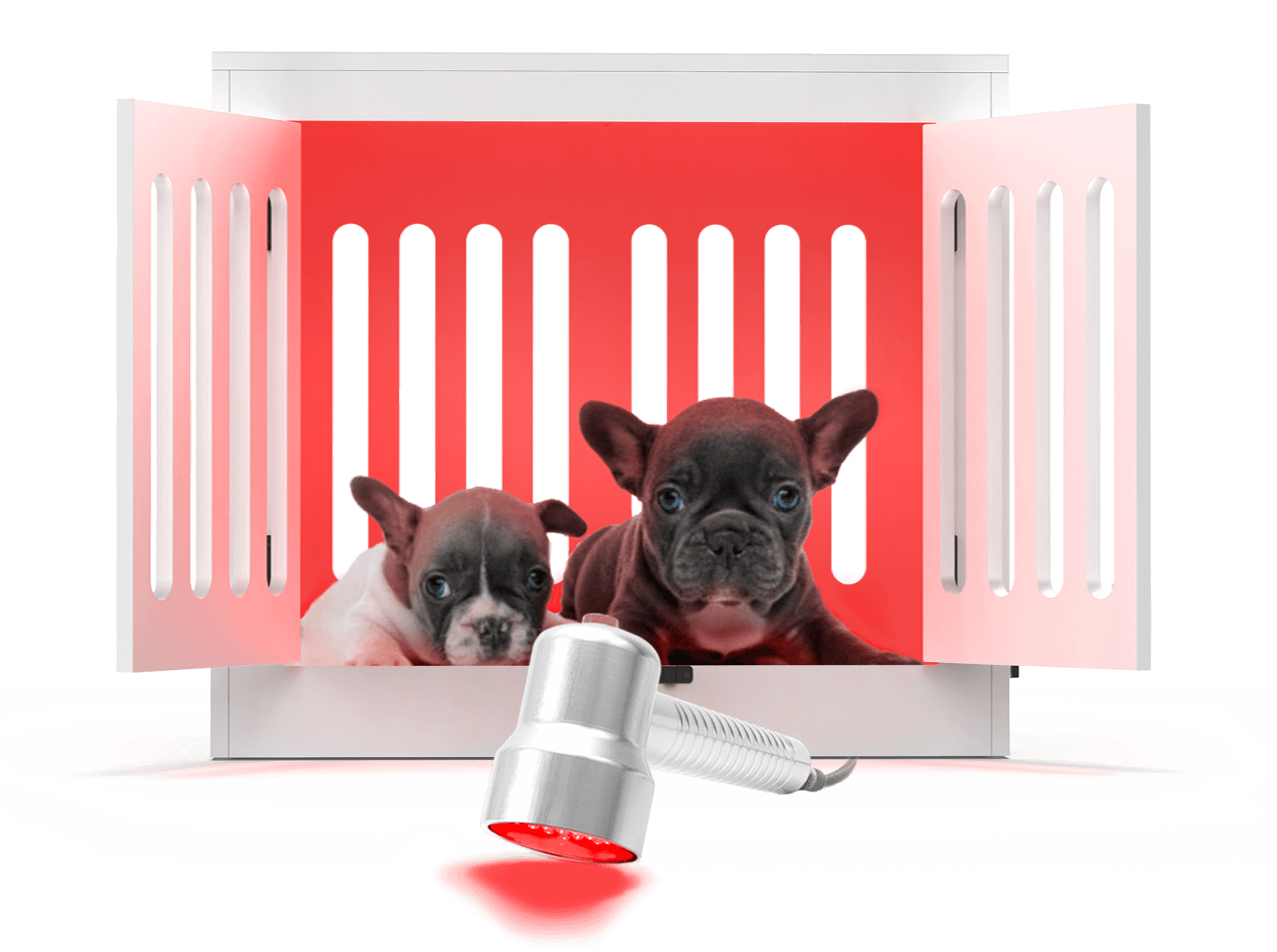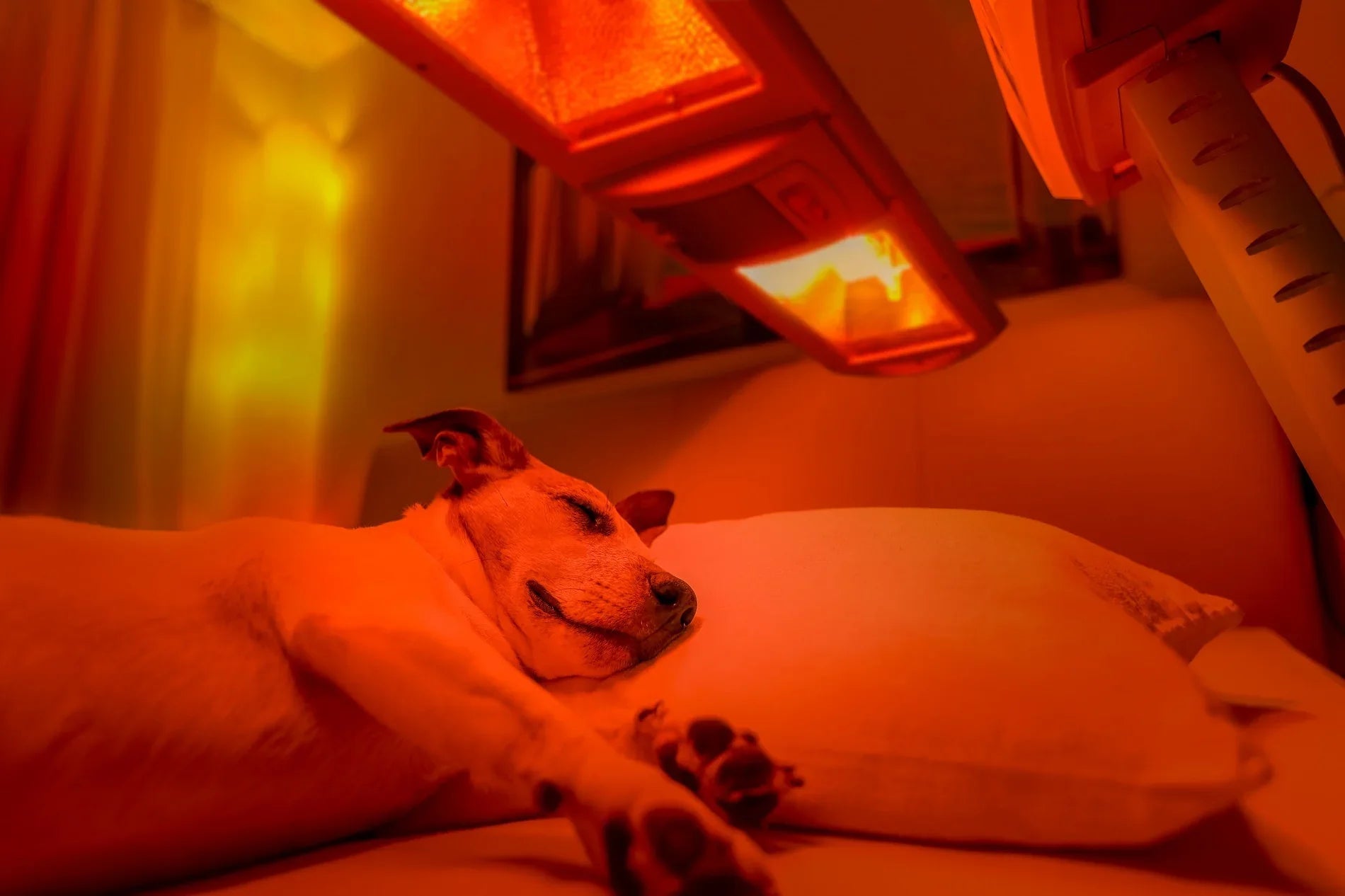How Red Light Therapy Can Boost Your Dog's General Health
Red Light Therapy has actually arised as an appealing choice for improving canine health and wellness. This non-invasive treatment boosts mobile activity and advertises healing in pets enduring from various conditions. Lots of animal owners report visible advantages, including pain alleviation and enhanced mobility. Understanding the underlying devices and potential applications is crucial. What certain problems can it attend to, and exactly how can it be safely incorporated right into a dog's treatment routines? The responses might amaze you.
Comprehending Red Light Therapy: What It Is and Exactly how It Works
Although red light therapy has gotten appeal in human medication, its application for canines is progressively identified for its possible benefits. This non-invasive therapy uses specific wavelengths of light, generally in the red and near-infrared range, to boost cellular function. The underlying principle includes the absorption of light by mitochondria, which improves ATP production and boosts cellular metabolic rate.
Therefore, red light therapy promotes enhanced circulation and aids in tissue repair work. The therapy is delivered via devices such as lasers or LED panels, which can be guided at specific areas of a dog's body. Therapy sessions are usually brief, making it a convenient alternative for family pet owners.
Recognizing this innovation's devices can help caretakers make educated decisions concerning their dog's healthcare. As research study remains to develop, the rate of interest in red light therapy as a corresponding treatment modality for various canine conditions is likely to grow.

Advantages of Red Light Therapy for Dogs
Red light therapy uses a number of significant advantages for canines, including reliable discomfort alleviation and an accelerated healing process. This therapy can boost mobility and flexibility, making it specifically important for maturing or hurt family pets. As even more pet dog owners look for alternate treatments, understanding these benefits comes to be progressively vital.
Pain Alleviation Applications
Lots of dog owners are turning to red light therapy as an appealing option for reducing discomfort in their family pets. This non-invasive therapy uses particular wavelengths of light to permeate the skin, boosting mobile activity and minimizing swelling. Pets experiencing persistent conditions such as joint inflammation, hip dysplasia, or post-surgical pain may experience considerable alleviation via this therapy. Researches suggest that red light therapy can boost blood circulation, assisting to provide essential nutrients to affected areas, further adding to discomfort decrease. In addition, it might help to decrease the reliance on pharmaceutical painkiller, which frequently feature unfavorable side impacts. As a result, several veterinarians are increasingly suggesting red light therapy as a efficient and secure option for taking care of pain in pets.

Accelerated Healing Process
The benefits of red light therapy expand beyond pain alleviation, playing an essential function in increasing the recovery process for pet dogs. This innovative treatment promotes cellular regrowth, boosting the manufacturing of ATP, which boosts energy availability for recovery cells. Furthermore, red light therapy enhances blood circulation, resulting in enhanced oxygen and nutrient distribution to injured locations. This heightened flow not only aids in faster recuperation however likewise minimizes inflammation, an usual barrier to recovery. Additionally, the therapy urges collagen manufacturing, vital for cells fixing and regrowth. Generally, by facilitating these organic processes, red light therapy considerably reduces recovery times, allowing dogs to go back to their typical tasks quicker and with higher vitality.
Enhanced Wheelchair and Flexibility
Improved wheelchair and versatility are substantial benefits of red light therapy for pets, particularly for those struggling with joint pain or stiffness. This non-invasive therapy makes use of specific wavelengths of light to permeate tissues, promoting raised blood circulation and reducing swelling. As a result, pet dogs frequently experience remedy for pain connected with arthritis, hip dysplasia, or post-surgical recovery. Routine sessions can boost mobile repair service and enhance muscle mass function, allowing dogs to restore their all-natural series of activity. Owners have reported recognizable improvements in their family pets' capacity to run, jump, and participate in activities they as soon as took pleasure in (Red Light Therapy Dogs). Ultimately, red light therapy not just helps relieve pain yet additionally adds to a much more active and meeting way of life for pets, improving their overall lifestyle
Conditions That Can Be Treated With Red Light Therapy
Although red light therapy has actually obtained appeal in numerous areas, its application in veterinary treatment, especially for pets, has revealed promise in dealing with an array of conditions. This non-invasive treatment method is thought to help in minimizing pain and swelling connected with arthritis, helping older pets gain back movement. In addition, it has been utilized to assist in the healing of injuries, burns, and surgical incisions, advertising faster recovery times.
Skin problem, such as dermatitis and hot areas, might also respond positively to red light therapy, lowering inflammation and motivating much healthier hair development. Additionally, the therapy can be useful for canines experiencing problems like hip dysplasia, tendon injuries, and muscle strains. By boosting cellular repair service and improving blood circulation, red light therapy supplies an all natural technique to improving the overall health of dogs, supplying alleviation and advertising a better lifestyle.
The Scientific Research Behind Red Light Therapy
Red light therapy operates the principle of photobiomodulation, which includes the application of certain wavelengths of light to promote mobile processes. These wavelengths, normally ranging from 600 to 1000 nanometers, pass through the skin and are absorbed by mitochondria, the energy-producing components of cells. This absorption improves ATP manufacturing, bring about increased power accessibility for mobile functions.

Researches suggest that red light therapy may also modulate immune reactions and support total cellular health. By taking advantage of these biological mechanisms, red light therapy offers a non-invasive therapy choice that can contribute considerably to a dog's well-being and recuperation from different problems.
Just How to Integrate Red Light Therapy Into Your Dog's Regular
Incorporating red light therapy right into a pet dog's routine can be a simple process, supplied that visit the website pet owners approach it with care and consistency. Selecting a suitable device is fundamental, as options variety from handheld devices to larger panels (Red Light Therapy Dogs). Proprietors should start by presenting the therapy slowly, permitting their pets to accommodate to the light direct exposure. Procedure can be arranged for about 10 to 20 minutes, ideally 2 to 3 times a week, depending upon the dog's requirements and the suggestions of a vet
Setting a comfortable environment is crucial; using a peaceful room where the dog feels kicked back can boost the experience. During the sessions, owners can involve their pets with relaxing voices or gentle petting to produce pop over to this web-site a soothing ambience. Keeping track of the pet dog's feedback is essential to guarantee the therapy is enjoyable and advantageous, ultimately helping to improve their general health.
Safety And Security Considerations and Precautions for Red Light Therapy
When taking into consideration red light therapy for dogs, security ought to always be a top priority to guarantee a positive experience. Pet proprietors have to consult a veterinarian prior to beginning any type of therapy, particularly for canines with pre-existing conditions or those taking medications. It is vital to choose tools particularly developed for animals, as human tools might not appropriate.
Appropriate eye protection is vital; both the pet and the trainer ought to wear goggles to secure their eyes from prospective damage. Additionally, sessions need to be monitored very closely to stay clear of overexposure. It is recommended to start with much shorter sessions and slowly enhance period based upon the canine's response.
Owners need to likewise observe their animals for any kind of indications of discomfort or adverse reactions during and after therapy. By following these safety and security considerations, red light therapy can be a advantageous and secure alternative for boosting a pet's well-being.
Frequently Asked Questions
Exactly how Commonly Should I Use Red Light Therapy on My Dog?

Can Red Light Therapy Replace Conventional Veterinary Treatments?
Red light therapy ought to not change traditional veterinary treatments. While it may enhance therapies by promoting recovery and decreasing pain, seeking advice from a vet stays crucial for comprehensive treatment and resolving hidden wellness concerns in pet dogs.
Are There Any Negative Effects of Red Light Therapy for Dogs?
Red light therapy for dogs generally has marginal adverse effects, such as short-lived skin inflammation or warmth at the treatment website. A lot of canines tolerate the therapy well, yet checking for any type of unusual special info reactions is suggested.
What Is the Suitable Duration for each and every Red Light Therapy Session?
The excellent duration for each red light therapy session commonly ranges from 10 to 20 mins, depending upon the canine's specific requirements and condition. Appointment with a vet is recommended to customize the treatment suitably.
Is Red Light Therapy Suitable for All Pet Dog Breeds?
Red light therapy is usually suitable for the majority of canine types. Private health problems and level of sensitivities might affect its applicability. Consulting a veterinarian assures the therapy is valuable and safe for each and every particular pet dog.
Many pet dog owners are transforming to red light therapy as an encouraging remedy for relieving discomfort in their pets. Enhanced mobility and adaptability are substantial advantages of red light therapy for dogs, particularly for those suffering from joint discomfort or tightness. Red light therapy operates on the concept of photobiomodulation, which entails the application of details wavelengths of light to promote mobile processes. Research study indicates that red light therapy can promote healing, decrease swelling, and alleviate pain in pet dogs. Red light therapy for pets generally has marginal side impacts, such as short-term skin soreness or warmth at the therapy site.